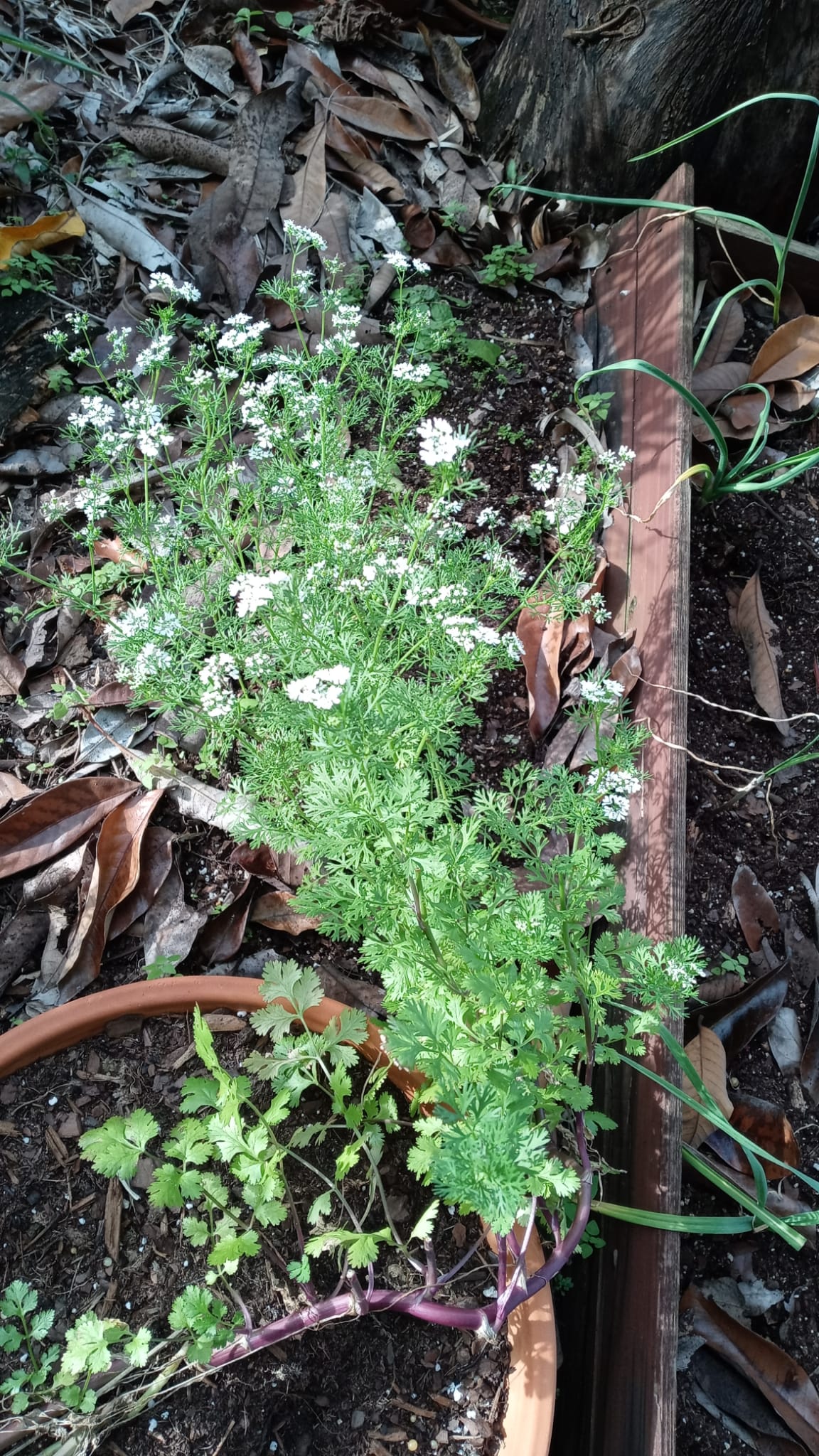Cilantro
Narda McCarthy
03/03/2022
| HERB BOTANICAL NAME | Coriandrum sativum |
| COMMON NAMES | Cilantro, coriander, Chinese parsley, cilantro de hoja pequeña, cilantrillo, belendfu, bereshe, aedkoriander; arabische pertersilie, cendro, celandria, coendro, coentro das hortas, wanzenkumme, wanzendill |
| TYPES | Leisure, Longstanding, Calypso, Santo, Cruiser |
| AYURVEDIC NAME | Dhania, dhanyaka |
| CHINESE NAME | Hu Sui Ye, Yuan Sui, Xiang Cai |
| HINDI NAME | Dhaniya, Hara Dhaniya |
| HOMEOPATIC NAME | Coriandrum Sativum, Mother Tincture |
| NATURE | Warm |
KINGDOM | Plantae |
SUB KINGDOM (phylum) | Embryophyta |
TYPE | Herb |
FAMILY | Apiacea |
CLADE | Angiosperms, asterids, eudicots |
TRIBE | n/a |
GENUS | Coriandrum |
SPECIES | Sativum |
CLASS | Magnolipsida |
DESCRIPTION | Deliciously aromatic, its stems are straight, smooth, cylindric with leaves at the top and a height that ranges from 12 to 24 inches. Its Leaves are light, green, feathery and flat. Flowers are beautiful, small, white or sometimes pale pink in flat top clusters pointing away from the center. |
PARTS USED | Leaves, flowers, stems, seeds and roots |
LIFE CYCLE | Annual |
USES | Food, medicinal, detoxing, antimicrobial, anxiolytic |
PREPARATIONS | Garnishes, tea, juice, extracts, tincture, poultice, powder, essential oil, dry leaves, capsules |
DOSAGE | n/a |
SAFETY | Mostly safe when not over consumed. Occasional allergies and overdose have been reported. Do not use during pregnancy or while lactating. Do not give to infants. |
TASTE | Varies. It could be acidic, soapy, nutty, tangy, earthy |
NUTRITIONAL VALUE | Vitamins A. B1, B2, B3, B6, C, E, K, calcium, iron, magnesium, manganese, phosphorus, potassium, sodium, zinc. A serving size of one ounce (28g) contains: 0 fat, 6 calories, 0g cholesterol, 1g sodium, 1g protein, 0g sugar, 1g dietary fiber, 0g fat and 13mg sodium |
NATIVE REGIONS | Asia, Mediterranean, North Africa |
GEOGRAPHIC DISTRIBUTION | Southern Europe, Northern Africa, Southwestern Asia, all Latin America, certain regions in the United States |
HABITAT | Preferably temperatures ranging from 50° to 85° F. Hot weather will cause the plant to produce flowering stems before the leaves can be harvested (bolting). In this kind of weather, you may expect less leaves and more flowering. |
CULTIVATION | Beds 40 inches wide, symmetrically planted, two lines per bed. Or 80 inches bed with seedlings covering the top. Hand weeding is recommended. Plant in late summer or early spring in loose, well-drained soil in full sun. Partial shade in warmer climates. Seeds should be spaced at about 1 to two inches and about ¼ inch deep. |
HARVESTING GUIDELINES | Hand harvest the leaves when the stems are around 6 inches tall, using a small sickle knife to cut the leaves just above the soil. This should happen around three to four weeks after sowing the seeds. If kept in cool, dry storage, the harvested leaves could have a life of up to 14 days. |
CONSTITUENTS | Proteins, carbohydrates, fibers, minerals, vitamins. Essential oils, fatty acids, flavonoids, carotenoids, coumarins, linalool, polyphenols, terpenes, coriandrol, petroselinic acid, geranil acetate, y-terpinene |
ENERGY | 95 kJ – 23 kcal |
NOTES AND REFERENCES:
FDA
UC Davis
University of Florida
Agricultural University of Georgia
Share your results with us on Instagram



Photograph at the top by Nadine Primeau @ Unsplash. Photographs in bottom gallery by in-house photographer.
